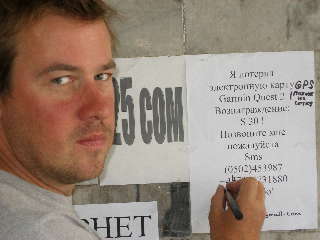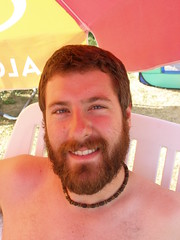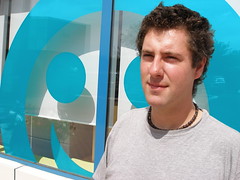motorbiketrip
Tom Horovitch & Peter Caley © Copyright 2005
Disclaimer: Due to the number of comments that have been received it has been felt necessary to clarify that this trip is in no way based on "The Long Way Round" which the authors of the trip were not aware and nor was it first broadcast of at the time at which this trip was drunkenly conceived. The authors of this trip would like to distinguish their intended trip from the journey undertaken in "The Long Way Round" in that unlike Charlie Borman and Ewan McGregor they are not experienced riders (they have both only been riding motorbikes for just over one year), they are not receiving sponsorship and they will not have a support crew with them at any point on the journey. Just to avoid any further confusion it has been thought that it would be helpful to point out that Tom Horovitch and Peter Caley are both fictional characters and are not famous film stars.
Tuesday, September 26, 2006
Monday, September 25, 2006
Osh, Kyrgyzstan - 9193 miles from London
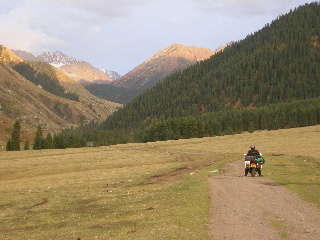
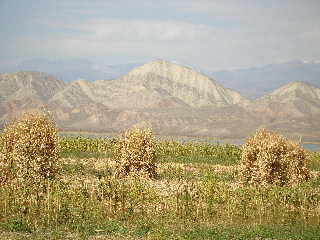
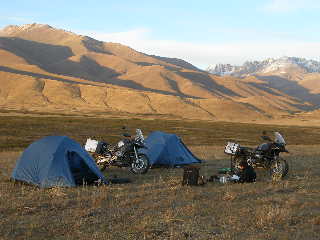
The aid agency vehicles belonging to the UN and Save the Children that I saw in Bishkek make more sense after the drive yesterday. Whilst not an unhappy looking place, this region is certainly poor and the people in the main are clearly dependant on subsistence farming. Passing through breathtaking countryside, we had to stop every half mile or so to negotiate shepherds with their cattle which were often drifting across the road. All the children seem to wave or throw stones at us now which makes for an interesting riding style.
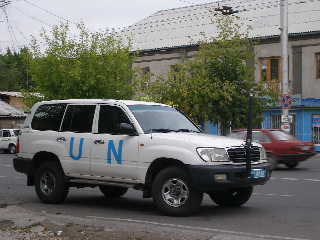
We have raced around Kyrgyzstan, covering nearly 1000 miles in the last five days. It's been a fascinating experience. We have seen Lake Issyk-Kul in the east of the country (the second largest alpine lake in the world), stayed in a yurt camp (yurts are the tent like homes of the nomadic Kyrgs), camped in the mountains and visited a surreal soviet sanatorium which was falling apart against the backdrop of stunning mountain scenery.
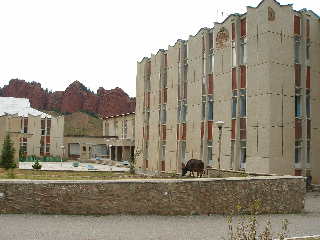
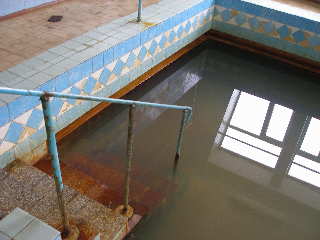
The sanatorium and the pool which apparantly contains healing radioactive waters!
The area is also said to be very poor and lacking in even basic facilities in parts. Needless to say, we will be out of contact for between ten days to two weeks. We will put another entry on the site when we reach either Dushanbe (in Tajikistan) or Tashkent (in Uzbekistan). There has been a change in our plans due to travel restrictions imposed in Turkmenistan. When we are in Tashkent we will be applying for another visa for Kyrgyzstan and a visa for China. With the help of a travel agent in China we hope to avoid Turkmenistan and instead travel the Karakoram Highway through China into Pakistan.
Monday, September 18, 2006
The Ala-Archa Canyon (20 miles outside Bishkek, Kyrgyzstan)
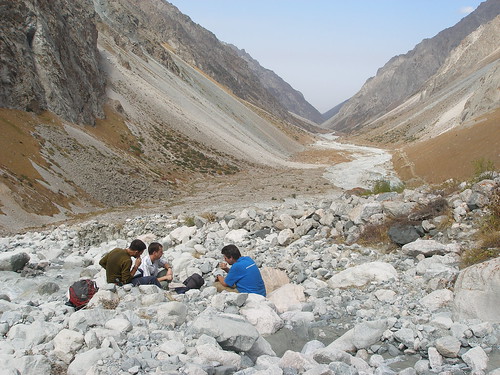
Having lunch by the river on the way up.
In our hostel in Bishkek we met Dean, who was writing the Kyrgyzstan update for the Lonely Planet, and Liron who was traveling after having completed his national service in Israel. They had invited us to do a 20 mile walk which they had been told about by Itay, Liron's traveling companion. He described it as an easy trek (which he had done a without Liron the week before) along a plateau to an abandoned ski lodge where we could spend the night and in the morning make the jouney back. Having not really done any trekking since the walk to Nordkapp (in Norway) and having just spent nearly four weeks in central Asian cities it sounded like just what we needed. So early on a Sunday morning, with our ruck-sacks packed with food and sleeping bags, we boarded the local bus to Osh Bazaar. At the Bazaar we bargained with taxi drivers and for 400 Som (about six pounds) we took a taxi the 20 miles into the national park where the Ala-Altra canyon lies. The canyon begins at 2200 metres, higher than most ski resorts that I have been to but the height wasn't noticeable as the weather was fine, if not a little overcast. We set off following the river which was flowing fast from the top of the mountain and the many streams joining it along the way. Having only very basic instructions from Itay and the listing in The Lonely Planet (Dean said it was unlikely that the previous writer had actually done the walk) we immediately took a wrong turning going over the first bridge that we found. Had we crossed the second bridge we wouldn't have found ourselves battling through undergrowth and rock climbing for 1.5 miles. Emerging from this experience at the second bridge with scratches all over our arms and looking like we'd been involved in failed suicide attempts we found the walk pleasant and easy going for the next 3 miles or so. Through some fairly stunning countryside, I walked and talked with Dean while Peter did the same with Liron a little further ahead.
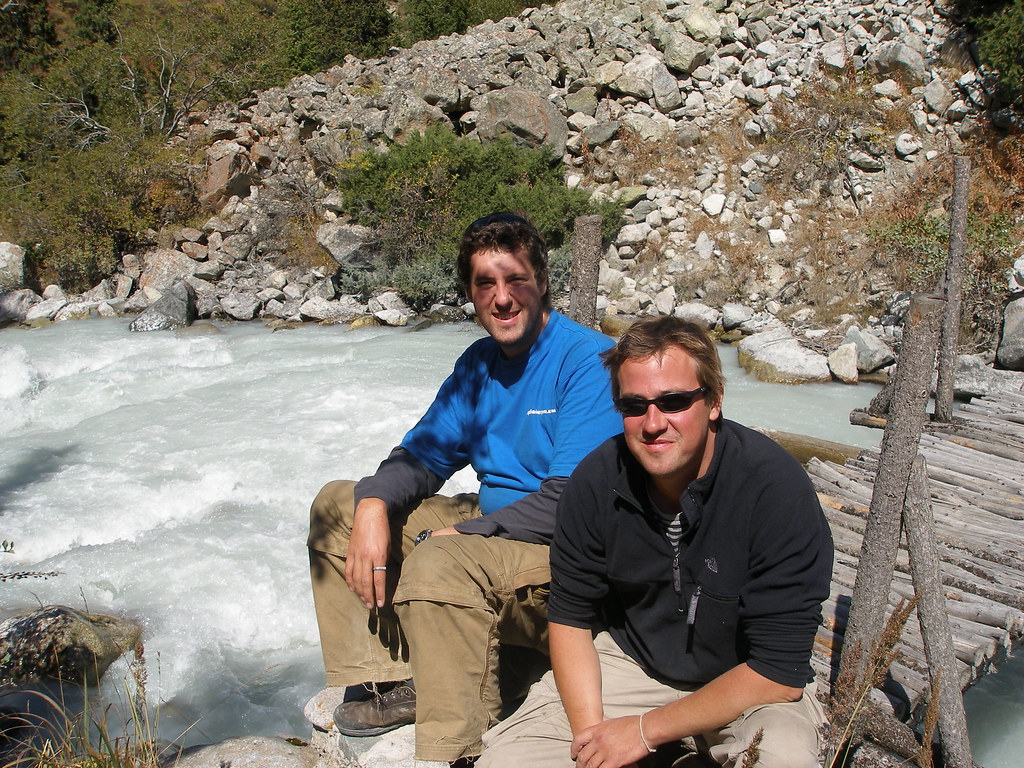
Peter and I on the second bridge
We found that we needed to cross the river again to continue along the canyon. Unfortunately the bridge that we needed was down and so, whilst considering the problem, we took 30 minutes for lunch by the side of the river. The problem with crossing the river without the bridge was that the water was fairly deep, fast moving and cold. There were rocks dotted around but not enough it seemed to form a path for us to get over. If we put our feet in the water for more than 30 seconds they turned blue and if we tried to stand where the water was too deep we would be knocked over by the current. What was needed was the courage to jump over parts of the river and to wade quickly through other parts. Minutes after lunch Dean showed such courage and stood triumphantly on the other side. The other three of us were more cowardly and looked in vein up and down the river for a path of stones that just wasn't there. 45 minutes later Liron somehow got over, but by then I'd climbed back down the canyon quite some distance, deluded that the river got narrower some way off. Peter, torn between going with Liron or with me, had made the wrong choice and followed me. I'd fallen for the common trap of not considering properly that things further away look smaller, and the reality of the situation turned out to be that the river was the same width and the same difficulty to cross further down. This wasted a considerable amount of the afternoon and by the time Peter and I got back up to where Liron and Dean had crossed if we hadn't found a plank of wood which we used get us most of the way across I think we would have turned back.
An hour and a half later, having all made it across, it was onwards and upwards, but now it was starting to rain. We passed a derelict building outside of which horses were grazing on a flat patch of grass. It was getting cold and our lack of coats and gloves was becoming a problem. The climb was also quite steep at times. It was necessary to do some rock climbing and at one point as I remember there was an almost vertical ascent to a point above an abandoned bulldoser. Peter and Liron had gone on ahead and I was lagging behind badly because my thighs were aching from the climbing. Dean was in the middle, stopping periodically to let me catch up. It was also becoming increasing difficult to breath normally and I was finding it necessary to stop more and more often to catch my breath and give my legs a rest. The rain was starting to turn to snow and visibility was decreasing. Dean's calmness had kept me calm because I couldn't believe that we would be getting ourselves into a perilous situation with this well traveled Lonely Planet writer, but as the snow became heavier, the night came closer and there was still no sign of Peter and Liron who Dean suspected had gone the wrong way I sensed panic in Dean's voice as told me that I had to hurry. We carried on for another 30 or so minutes in what had now become a snow storm. The visibility briefly improved and we were very relieved to see Liron and Peter on a path below us coming in our direction. We climbed down to the path but the news was not good. They had walked quite a distance ahead of us and hadn't seen the ski lodge and the question now was what we should do. We guessed that we had about 45 minutes of light left and if we couldn't find the lodge there was no way that we would survive the night in the open without even a pair of gloves between us. We decided to carry on for 30 minutes and if we didn't find the lodge we would have to head down in the dark to the derelict building where we had seen with the horses grazing outside and try to make camp there with whatever we could find. In the snow, in the dark and with all the climbing we would need to do we knew that this wasn't safe and could take quite a few hours if we were in fact able to do it at all. So we pushed on. I checked my GPS and we had climbed 1300 metres and the reason for my dizziness was the fact that we were at an altitude of 3500 metres. I was now walking with Liron and starting to laugh a little uncontrollably about our situation when Liron said he thought he could see something in the distance which could be the lodge. Was it some sort of snowy mirage I thought. Liron went ahead to investigate when Dean shouted from ahead that he had definitely seen it. With only about 20 minutes of light left I limped the last 100 metres to safety.
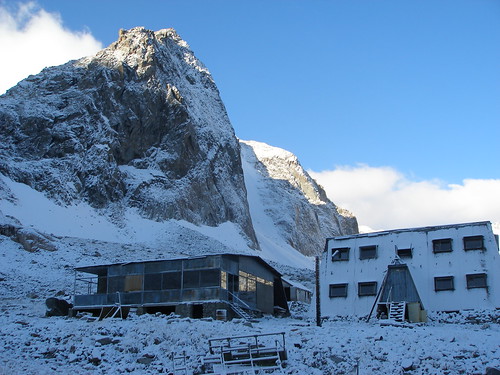
The illusive ski-lodge in the morning
Inside the lodge, which was full of an assortment of rubbish from previous expeditions, we immediately got into our sleeping bags and Liron lit the camping stove. We were freezing and Dean and I both had some symptoms of altitude sickness. We did however settle down after some soup and some pasta, much talk of how badly the night could have ended, how stupid we had been do that walk so ill equiped and how Itay was going to get a piece of our minds when we got back.
We had feared that we might have been snowed in if the snow had continued to fall at the same rate as it was falling when we had arrived. We were however pleasantly surprised when we awoke to find that only a couple of inches had settled.We were out of the lodge by 8am and after a couple of Ibuprofen my headache from the altitude was gone in 20 minutes and we were making the decent in beautiful sunshine. The walk down was extremely easy by comparison with the ascent the day before. We crossed the river (which was running much lower) in 5 instead of 90 minutes and once we were off the snowy peak we found ourselves walking in tee-shirt weather through countryside with colours much more vibrant than the day before due to the sunlight and among butterflies dancing around us.
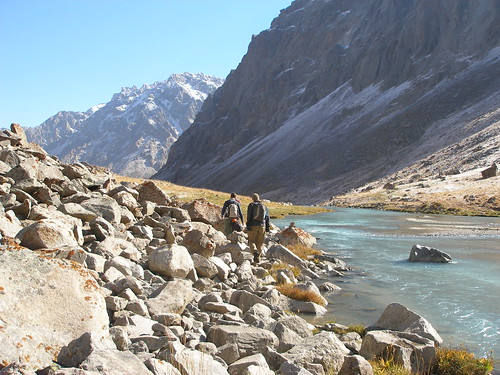
Walking down
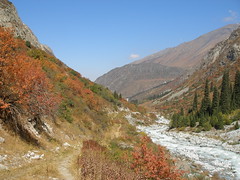
Walking down
We had lunch by the river near to where we started the walk the day before. We all agreed that we didn't regret having done this trek but that in retrospect it had been a reckless thing to do. Dean said that he would revise the Lonely Planet entry to take account of our experiences, and if nothing more memorable happened to him during his time in Kyrgyzstan he would include this story in his personal profile at the start of the book. We all agreed that Itay, for his misdescription of the walk, was going to get it when we got back to the hostel, but when we eventually got back none of us had the energy to give it to him and so we settled for showing him the pictures and telling him the story instead.
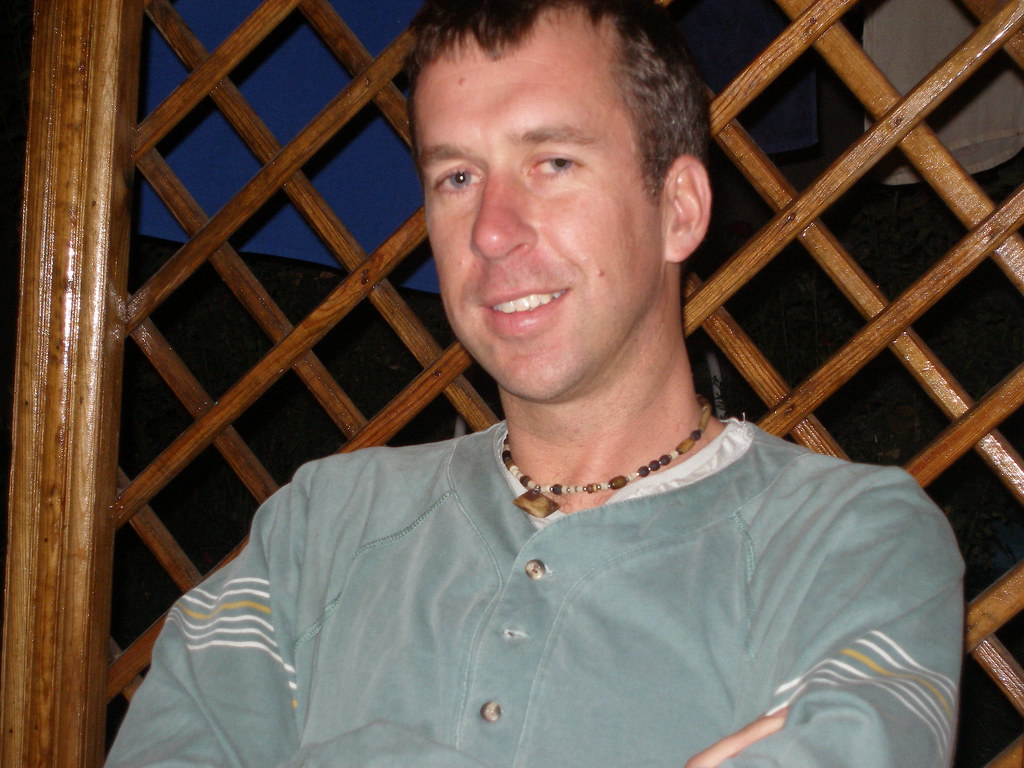
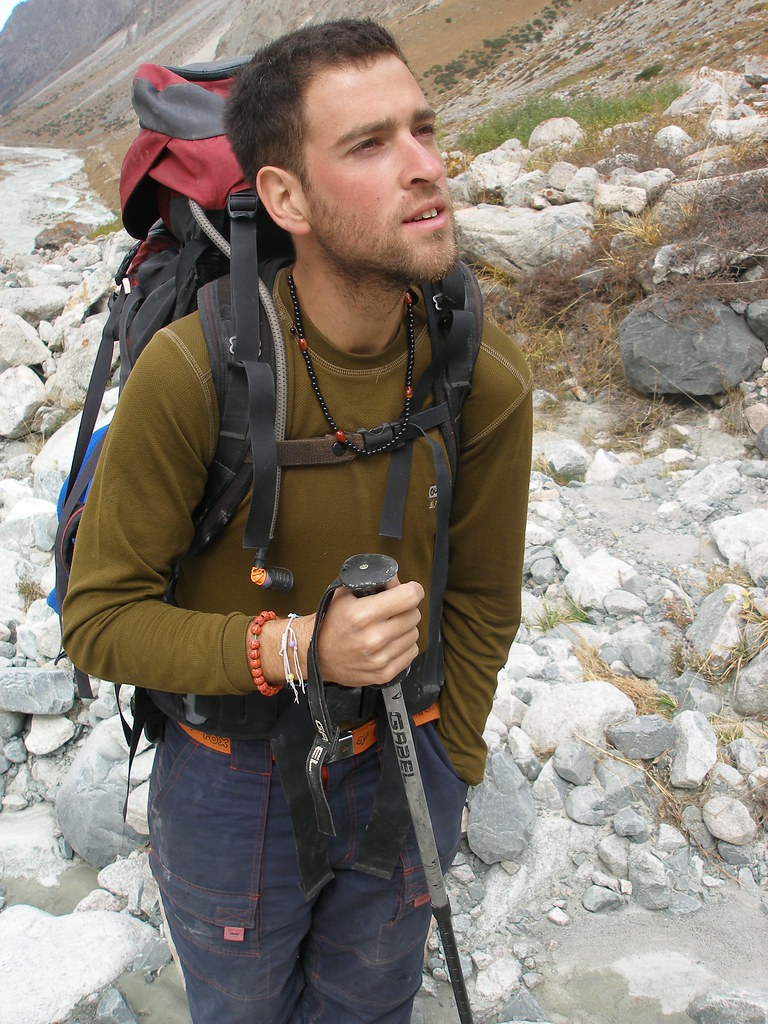
Dean (left); Liron (right)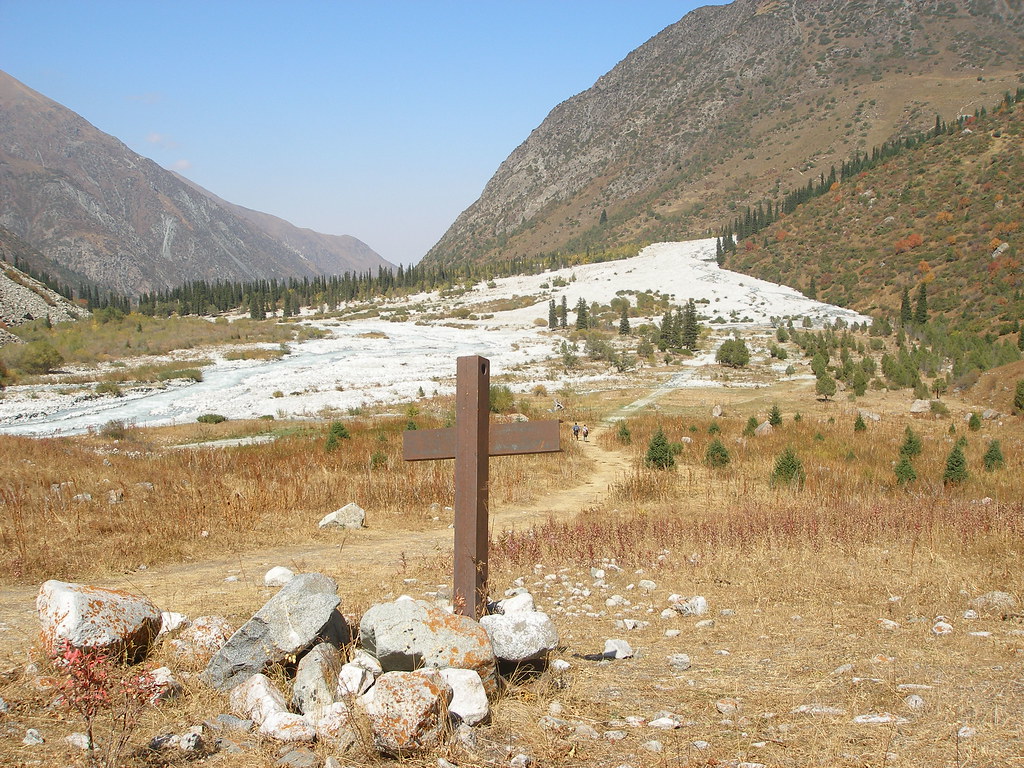
Luckily, not any of us...
Written by Tom.
Thursday, September 14, 2006
Bishkek, Kyrgyzstan - 8233 miles from London
Our Kazakh phone numbers no longer work, but we have new Kyrg SIM cards. Our numbers are:
Peter: 00 996 502 453957
Tom: 00 996 502 453987
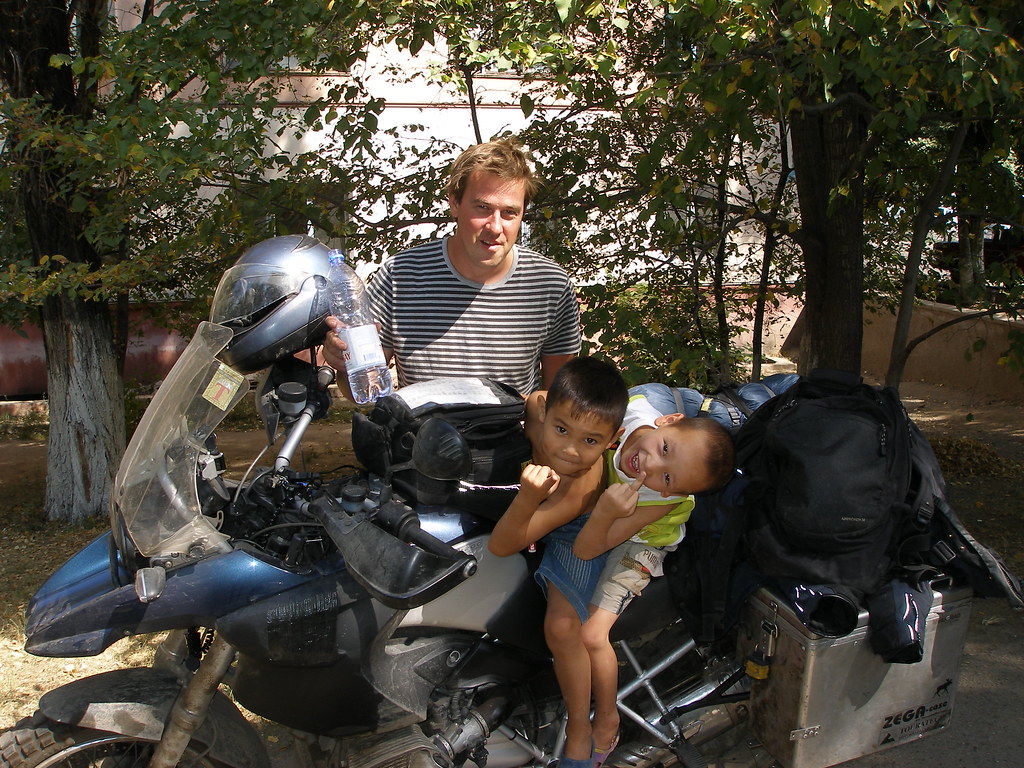
Kids on my bike outside the hostel, Almaty
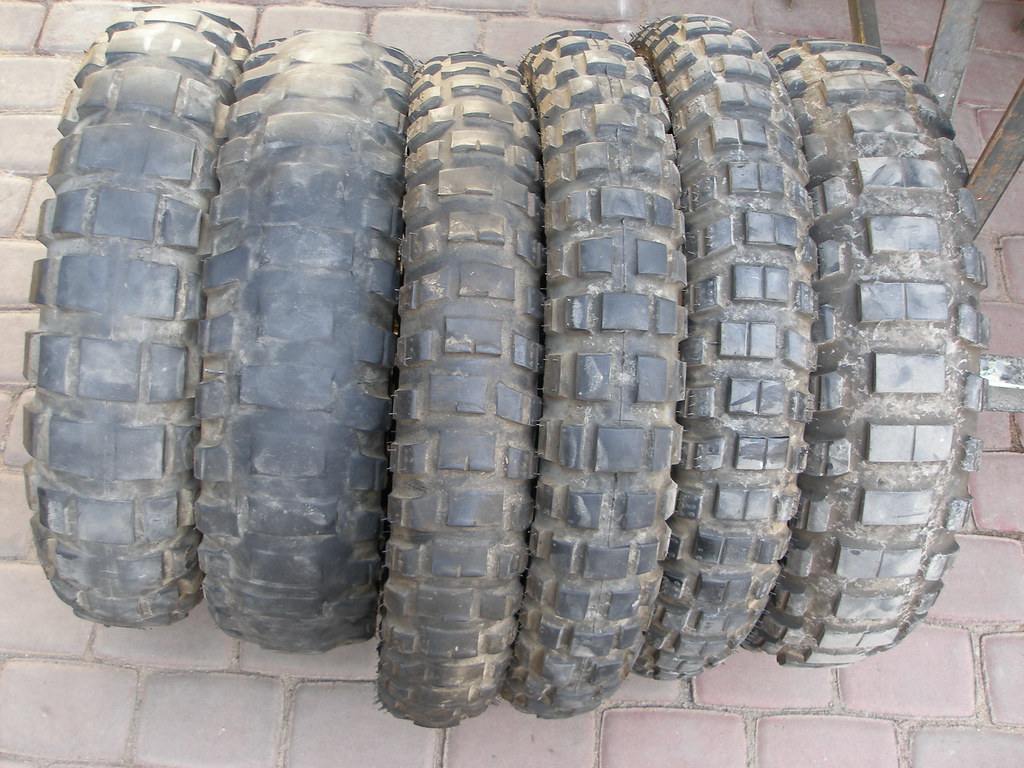
Our old tires. From left to right - my back tire (now being carried as a spare); Peter's back tire (notice how much more Peter's tire has worn - big lad and heavy bike!); Peter's front tire which was repaired in Perm; my front tire; the front tire Peter had sent from BMW Moscow to Perm (now being carried as a spare); a crap back tire that we bought second-hand in Almaty which looked ok but turned out to be 12 years old and screamed on the road because the rubber was so tight and dry.
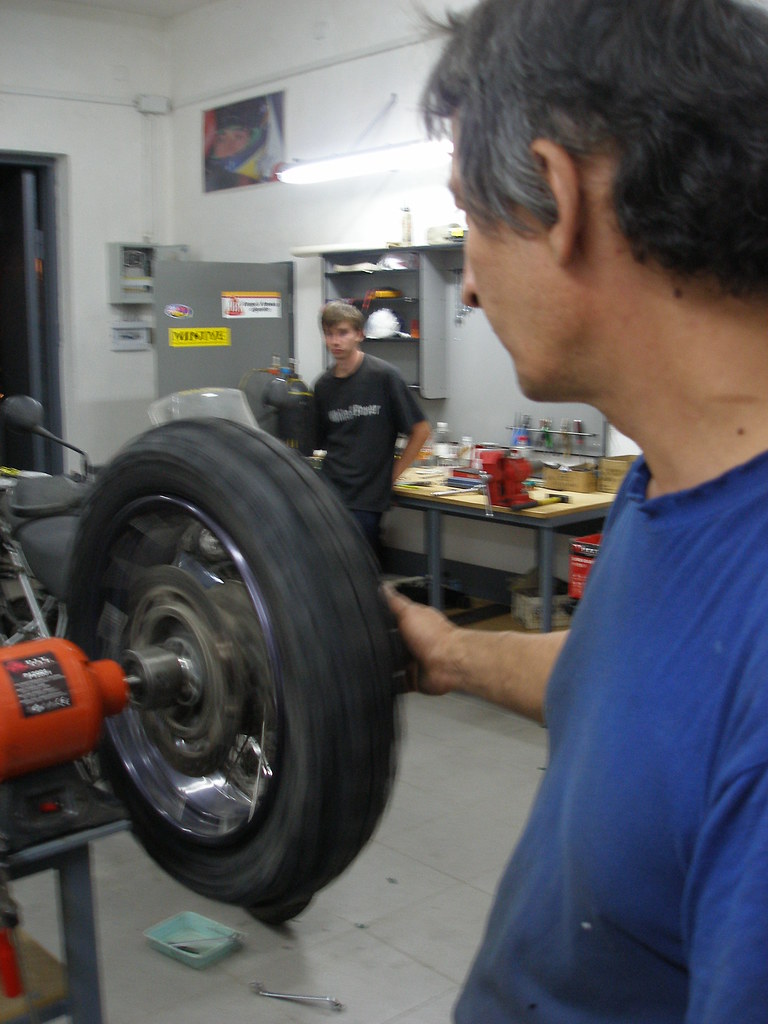
Boris, the mechanic we watched work meticulously on our bikes for two days. Here he is balancing one of the wheels.
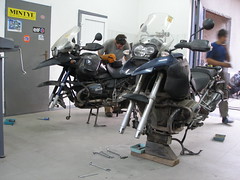
The bikes in Boris's workshop having the tires changed.
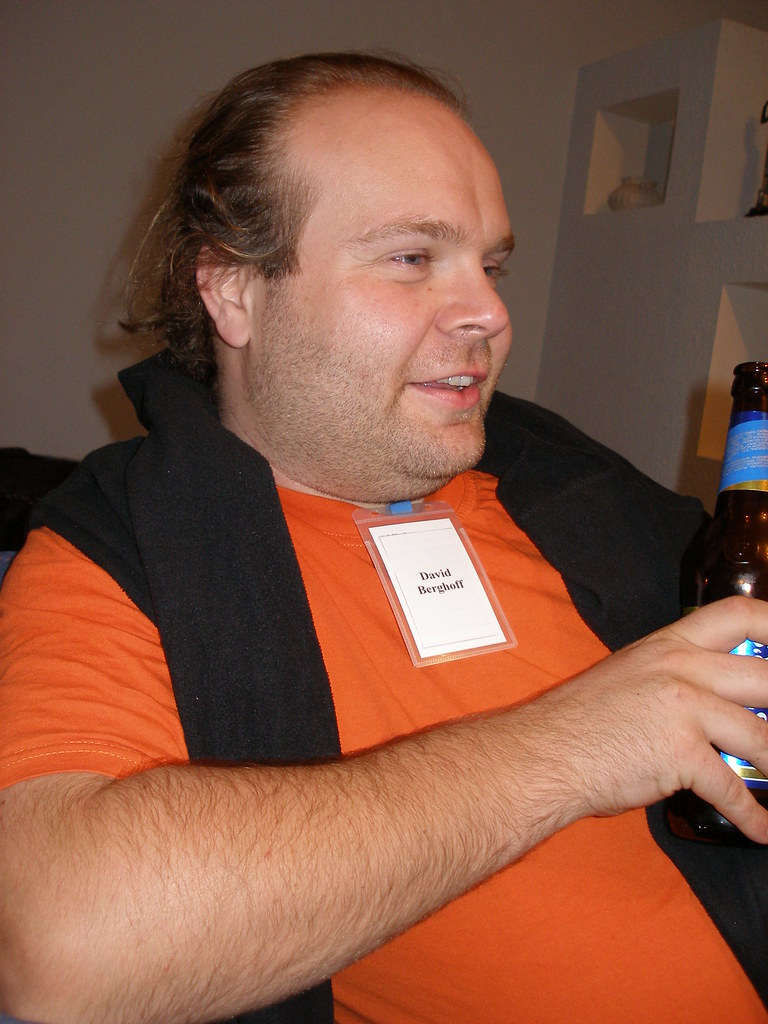
Having a drink with David Berkhof of Stantours who has been so helpful with the planning of this trip.
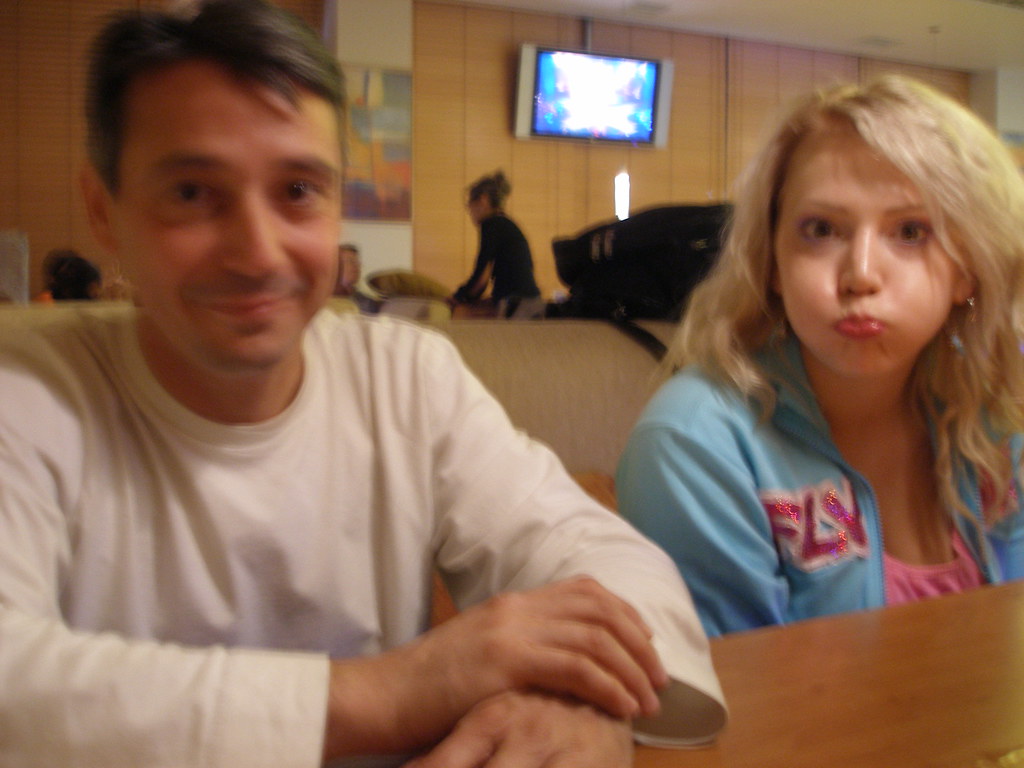
Fernando, a Spanish biker who has ridden from London but decided to live in Almaty for six months (see Nomad Podcast - link on right side of this page in the travel blogs section) and Reana.
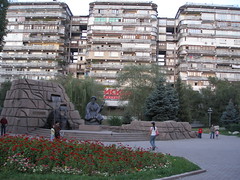
Soviet housing block, Almaty
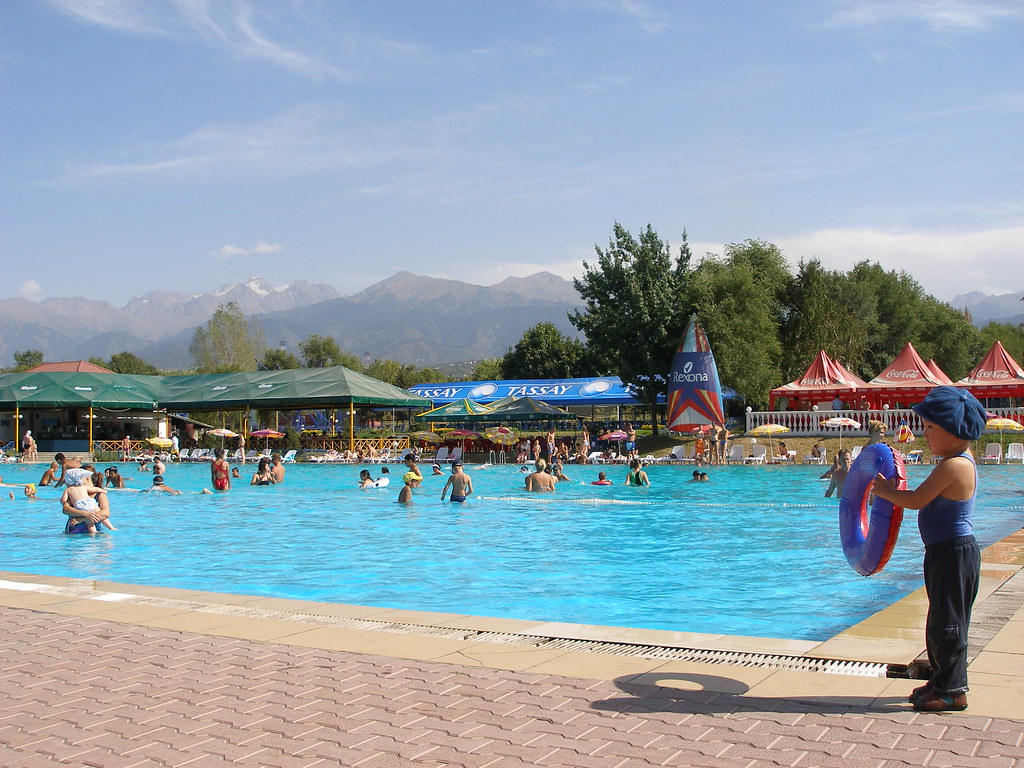
Public swimming pool.
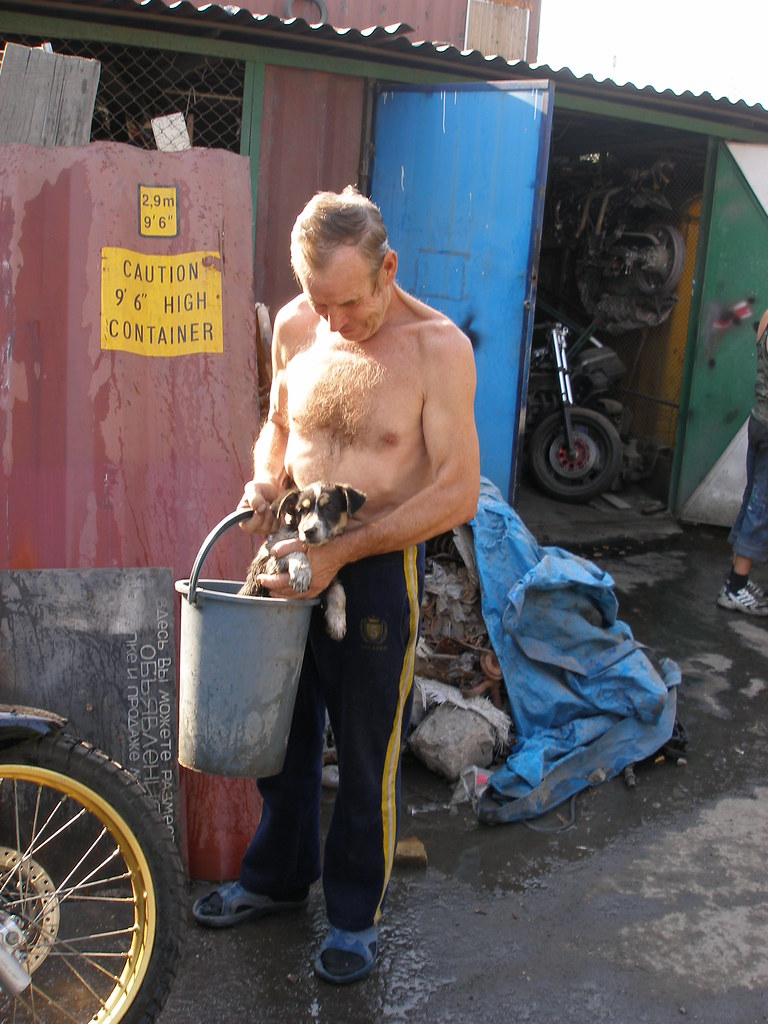
Man washing a puppy in a bucket at the first motorbike garage that we went to.
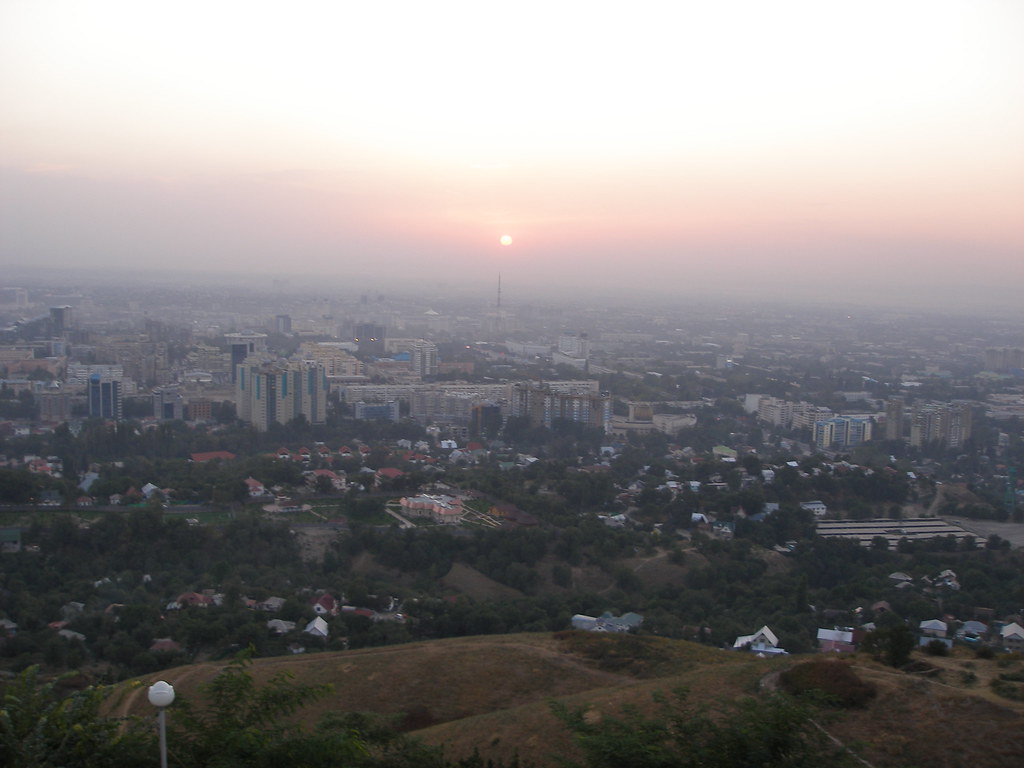
Sunset over Almaty
More photos on Flickr (for link see site content on the right of this page).
Entry by Tom.
Wednesday, September 13, 2006
Remember this? Now we are famous in Kazakhstan too...
 Now we are famous in Kazakhstan too! In a rare newspaper interview, we told the Pavalodar Versia all about the trip. The text is below. We haven't a clue what it says so a translation would be gratefully received.
Now we are famous in Kazakhstan too! In a rare newspaper interview, we told the Pavalodar Versia all about the trip. The text is below. We haven't a clue what it says so a translation would be gratefully received.это возможно?
На самолете это можно сделать за 18 часов, но вот на мотоцикле…
Юлия ЛЕДАК
Не выходят из моды такие отчаянные человеческие поступки, как длительные путешествия на велосипедах, автомобилях, мотобайках, яхтах и плотах. Хочется повидать мир, пообщаться с людьми разных стран. Но все больше путешественников пытаются сделать свой путь более экстремальным, например, отправиться на другой конец света, совершенно не зная иностранных языков.
Мой английский также не отличался особой быстротой и сообразительностью, однако наша встреча случилась так внезапно, не было времени приглашать переводчика, поэтому пришлось объясняться на пальцах.
Сразу возник первый вопрос: «Почему мотоциклы, – почему не комфортабельная машина или другие виды транспорта, самолет и поезд, например?». Ребята, поморщившись, ответили, что мотоциклы для них в самый раз.
- Едешь и чувствуешь воздух, солнце, дождь, можешь вертеть головой на 180 градусов и обозревать все, что проносится мимо тебя.
На родине Том и Питер работают адвокатами, одному из них 36 лет, другому 29 – не такой уж бесшабашный возраст. Общаются они три года, вместе путешествовали по Испании. Эту же грандиозную поездку они планировали полтора года, сами откладывали деньги, не надеясь на помощь спонсоров.
Стартовали ребята из Англии, далее двигаясь по определенному маршруту, согласно утвержденному графику, останавливаясь в каждой стране только на один день: Франция (город Калаис), Бельгия (порт Джент), Нидерланды, Швеция, Норвегия (город Осло) и Финляндия. На этом Европа, по которой Том и Питер колесили не раз, закончилась. Первым городом России, страны, где они никогда не были, но очень много слышали о гостеприимстве и особом образе жизни русских, был Выборг. Этот небольшой городок, граничащий с Финляндией, имеет свою неповторимую историю. Люди там наполовину русские – наполовину финны, то есть, в душе, конечно, остаются верными своим традициям, но деньги зарабатывают, в основном, благодаря иностранным соседям. В Санкт-Петербурге ребята задержались на целую неделю, и не зря – там было на что посмотреть. Самыми возвышенными словами англичане описывали свои впечатления о Питере: wonderful, beautiful, perfect, especially. Они катались по городу, были в Эрмитаже, бродили по набережной. Столько же времени они провели и в Москве.
- Это город современный и деловой. Он живет своим ускоренным темпом. В Петербурге хочется отдыхать и восхищаться жизнью, а в Москве только зарабатывать деньги, - говорит Том.
В Нижнем Новгороде путешественникам понравился Кремль и другие старинные строения. Далее по маршруту были Казань и Пермь. В последнем городе один из мотоциклов сломался, потом туристов застал сильный дождь, свойственный этим местам. В Перми Тому и Питеру пришлось задержаться на целых пять дней. Следующие два дня они пробыли в Екатеринбурге. И, наконец, совсем приблизились к Казахстану, остановившись в Омске. Преодолев еще 400 километров, ребята оказались в Павлодаре, поселились в одноименной гостинице.
- Вы так долго путешествуете и каждый день вместе, не надоели друг другу?
- Иногда бывает, поворчим, разбежимся по комнатам, а на следующий день опять в путь.
- Страшно не бывает, ведь Россия – это вам не Англия, могут и мотоциклы украсть, и в глаз дать?
- С людьми, способными на это, нас, слава Богу, судьба не сводила и, надеемся, форс-мажорные обстоятельства обойдут их стороной.
О наших людях англичане говорят наилучшим образом: отзывчивы, приветливы и доброжелательны, всегда помогут найти дорогу или объяснить непонятый иностранцем момент. Однажды в кафе один из посетителей, услышав их разговор, угостил путешественников пивом. Для англичан это был большой сюрприз. С казахскими таможенниками и дорожными полицейскими они вообще не имели никаких проблем. Том и Питер очень удивились, услышав, что в Павлодаре работают волонтеры из Америки и Европы, много спрашивали о нашем уровне жизни, поражались низким ценам и отметили хорошее знание многих россиян и казахстанцев английского языка – их соотечественники ограничиваются лишь родной речью.
Дальше путь мотоциклистов лежит через восточную и южную часть Казахстана (Семипалатинск, Алматы), Кыргызстан, Таджикистан, Памир, Узбекистан, Туркменистан, Иран, Пакистан, Индию, Тайланд и Индонезию. Если хватит денег, финишировать путешественники планируют в Австралии, добираться до которой хотят или через океан, или на самолете. Каждый свой шаг, впечатления от увиденного, а также фото, Том и Питер размещают на собственном web-сайте http://www.motobiketrip.com/. Возможно, вскоре там появится несколько слов и о Павлодаре.
Pavalodar Versia
Monday, September 04, 2006
Now he's beardy, now he's not...
